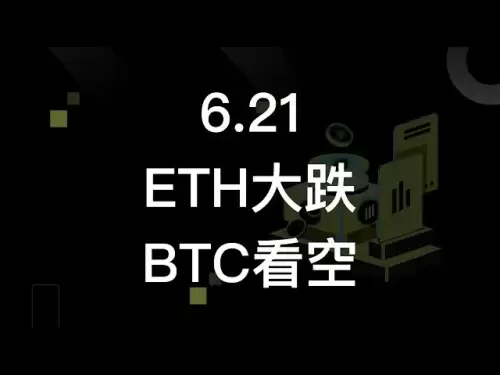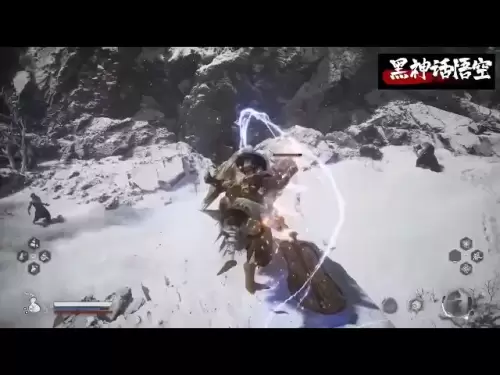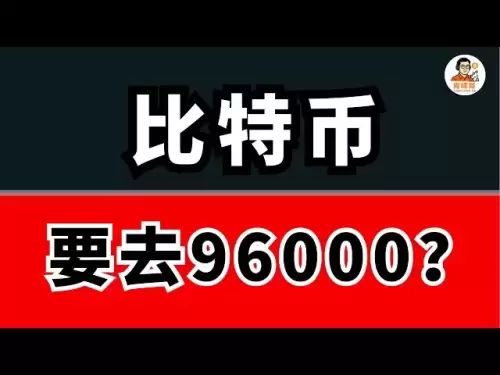-
 Bitcoin
Bitcoin $106,754.6083
1.33% -
 Ethereum
Ethereum $2,625.8249
3.80% -
 Tether USDt
Tether USDt $1.0001
-0.03% -
 XRP
XRP $2.1891
1.67% -
 BNB
BNB $654.5220
0.66% -
 Solana
Solana $156.9428
7.28% -
 USDC
USDC $0.9998
0.00% -
 Dogecoin
Dogecoin $0.1780
1.14% -
 TRON
TRON $0.2706
-0.16% -
 Cardano
Cardano $0.6470
2.77% -
 Hyperliquid
Hyperliquid $44.6467
10.24% -
 Sui
Sui $3.1128
3.86% -
 Bitcoin Cash
Bitcoin Cash $455.7646
3.00% -
 Chainlink
Chainlink $13.6858
4.08% -
 UNUS SED LEO
UNUS SED LEO $9.2682
0.21% -
 Avalanche
Avalanche $19.7433
3.79% -
 Stellar
Stellar $0.2616
1.64% -
 Toncoin
Toncoin $3.0222
2.19% -
 Shiba Inu
Shiba Inu $0.0...01220
1.49% -
 Hedera
Hedera $0.1580
2.75% -
 Litecoin
Litecoin $87.4964
2.29% -
 Polkadot
Polkadot $3.8958
3.05% -
 Ethena USDe
Ethena USDe $1.0000
-0.04% -
 Monero
Monero $317.2263
0.26% -
 Bitget Token
Bitget Token $4.5985
1.68% -
 Dai
Dai $0.9999
0.00% -
 Pepe
Pepe $0.0...01140
2.44% -
 Uniswap
Uniswap $7.6065
5.29% -
 Pi
Pi $0.6042
-2.00% -
 Aave
Aave $289.6343
6.02%
Will the gap after the gap-down will be filled?
A gap-down in crypto occurs when the price opens lower than its previous close; whether it fills depends on sentiment, volume, news, and liquidity.
May 28, 2025 at 10:57 pm
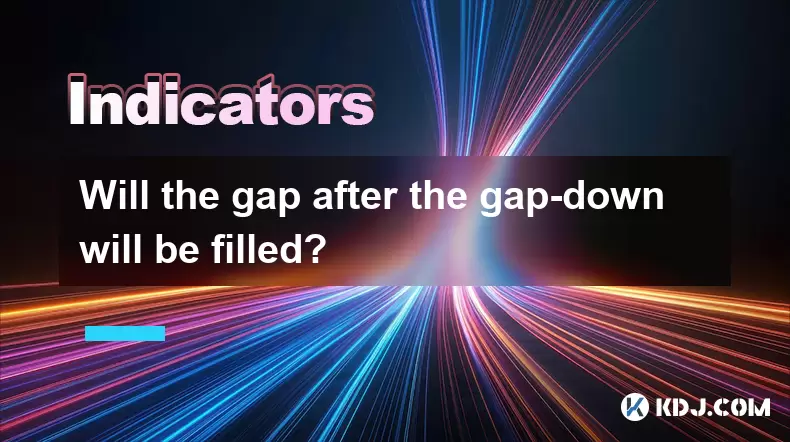
Will the gap after the gap-down be filled?
In the world of cryptocurrencies, understanding market movements and technical analysis is crucial for traders and investors. One common question that arises is whether the gap after a gap-down in a cryptocurrency's price will be filled. To address this, we need to delve into what a gap-down is, how it occurs, and the factors that influence whether the subsequent gap will be filled.
What is a gap-down in the cryptocurrency market?
A gap-down in the cryptocurrency market refers to a situation where the price of a cryptocurrency opens significantly lower than its previous closing price, creating a visible gap on the price chart. This typically happens due to negative news, market sentiment shifts, or significant selling pressure overnight or over a weekend when trading is less active. For example, if Bitcoin closed at $50,000 and opened the next trading day at $48,000, a gap-down would be evident on the chart.
Factors influencing whether a gap will be filled
Several factors can influence whether the gap after a gap-down will be filled. Market sentiment plays a crucial role; if the sentiment remains negative, the gap may not be filled quickly. Trading volume is another important factor; high trading volume can lead to faster gap filling as more traders are actively buying and selling. News and events can also impact the likelihood of a gap being filled; positive news can drive prices up to fill the gap, while continued negative news can keep prices down.
Historical examples of gaps in the cryptocurrency market
Looking at historical data can provide insights into whether gaps are typically filled. For instance, during the 2020 market crash, Bitcoin experienced several gap-downs due to the global economic uncertainty caused by the COVID-19 pandemic. Some of these gaps were filled within weeks as the market recovered, while others took months. Similarly, in 2021, after the Chinese government cracked down on cryptocurrency mining, Bitcoin saw a significant gap-down, which was eventually filled as the market adjusted to the new reality.
Technical analysis and gap filling
Technical analysis can be a useful tool for predicting whether a gap will be filled. Traders often look at support and resistance levels to gauge where the price might move next. If a gap-down occurs near a strong support level, it's more likely that the gap will be filled as the price rebounds from the support. Conversely, if the gap-down happens far from any significant support, filling the gap might take longer or not happen at all. Candlestick patterns and indicators like the Relative Strength Index (RSI) can also provide clues about potential price movements.
Strategies for trading gaps in the cryptocurrency market
Traders can employ various strategies to capitalize on gaps in the cryptocurrency market. One common strategy is gap trading, where traders buy immediately after a gap-down with the expectation that the gap will be filled. This strategy requires careful analysis of market conditions and a clear understanding of the risks involved. Another strategy is waiting for confirmation, where traders wait for the price to start moving back towards the gap before entering a position. This approach can be less risky but may result in missing out on some of the potential gains.
The role of liquidity in gap filling
Liquidity is another critical factor in determining whether a gap will be filled. In highly liquid markets like Bitcoin and Ethereum, gaps are more likely to be filled quickly due to the large number of buyers and sellers. In contrast, less liquid cryptocurrencies might see gaps that remain unfilled for longer periods. Market makers and institutional investors can also influence liquidity and, consequently, the speed at which gaps are filled.
Psychological factors and gap filling
Psychological factors can significantly impact whether a gap will be filled. Fear and greed are powerful emotions in the cryptocurrency market. After a gap-down, fear can keep prices low as traders panic sell, while greed can drive prices back up as traders see an opportunity to buy low. Herd mentality can also play a role, where traders follow the crowd, either exacerbating the gap or helping to fill it.
Regulatory impact on gap filling
Regulatory news can have a substantial impact on whether a gap after a gap-down will be filled. For example, if a major regulatory body announces stricter policies on cryptocurrencies, it could lead to a gap-down and keep prices low, making it less likely for the gap to be filled quickly. Conversely, positive regulatory news can boost investor confidence and help fill the gap.
Volatility and gap filling
The inherent volatility of the cryptocurrency market can both help and hinder gap filling. On one hand, high volatility can lead to rapid price movements that fill gaps quickly. On the other hand, extreme volatility can also cause prices to swing wildly, making it harder to predict whether a gap will be filled. Volatility indicators like the Bollinger Bands can help traders assess the likelihood of a gap being filled based on current market conditions.
Frequently Asked Questions
1. How can I identify a gap-down in real-time trading?
To identify a gap-down in real-time trading, you need to monitor the opening price of a cryptocurrency compared to its previous closing price. Use a reliable trading platform that provides real-time data and charts. If the opening price is significantly lower than the closing price, you can visually confirm the gap-down on the chart.
2. Are there specific cryptocurrencies more prone to gap-downs?
Cryptocurrencies with lower market capitalization and liquidity are generally more prone to gap-downs. For example, altcoins with smaller market caps can experience more significant price gaps due to lower trading volumes and higher susceptibility to market manipulation.
3. Can algorithmic trading influence whether a gap will be filled?
Yes, algorithmic trading can significantly influence whether a gap will be filled. Algorithms designed to buy or sell based on specific market conditions can drive prices towards filling the gap. However, if many algorithms are programmed to sell during a gap-down, it could exacerbate the gap and delay filling.
4. How do weekends and holidays affect gap-downs and gap filling?
Weekends and holidays can exacerbate gap-downs because trading volumes are typically lower, and significant news or events can cause large price movements without immediate market reaction. Gaps that occur over weekends or holidays may take longer to fill due to the delayed market response when trading resumes.
Disclaimer:info@kdj.com
The information provided is not trading advice. kdj.com does not assume any responsibility for any investments made based on the information provided in this article. Cryptocurrencies are highly volatile and it is highly recommended that you invest with caution after thorough research!
If you believe that the content used on this website infringes your copyright, please contact us immediately (info@kdj.com) and we will delete it promptly.
- Pi Coin Price Bulls: Navigating the Crossroads After Mainnet Launch
- 2025-06-21 18:45:12
- ZachXBT, Bitcoin Bridges, and Garden Finance: A Deep Dive
- 2025-06-21 18:25:11
- BTC Recovery, Bearish Sentiment, and Trader Impatience: Navigating the Crypto Maze
- 2025-06-21 18:25:11
- SUI Price Wobbles Amid Crypto Slump: Opportunity or Omen?
- 2025-06-21 18:45:12
- Worldcoin Price Prediction: Will WLD Stage a Comeback?
- 2025-06-21 19:05:11
- Cardano's Crossroads: Market Sentiment, Slides, and a Glimmer of Hope
- 2025-06-21 19:05:11
Related knowledge

Does the sudden contraction of ATR indicate the end of the trend?
Jun 20,2025 at 11:14pm
Understanding ATR and Its Role in Technical AnalysisThe Average True Range (ATR) is a technical indicator used to measure market volatility. Developed by J. Welles Wilder, ATR calculates the average range of price movement over a specified period, typically 14 periods. It does not indicate direction—only volatility. Traders use ATR to gauge how much an ...

Is it invalid if the DMI crosses but the ADX does not expand?
Jun 21,2025 at 09:35am
Understanding the DMI and ADX RelationshipIn technical analysis, the Directional Movement Index (DMI) consists of two lines: +DI (Positive Directional Indicator) and -DI (Negative Directional Indicator). These indicators are used to determine the direction of a trend. When +DI crosses above -DI, it is often interpreted as a bullish signal, while the opp...

Is the trend continuation when the Williams indicator is oversold but there is no rebound?
Jun 20,2025 at 11:42pm
Understanding the Williams %R IndicatorThe Williams %R indicator, also known as the Williams Percent Range, is a momentum oscillator used in technical analysis to identify overbought and oversold levels in price movements. It typically ranges from 0 to -100, where values above -20 are considered overbought and values below -80 are considered oversold. T...
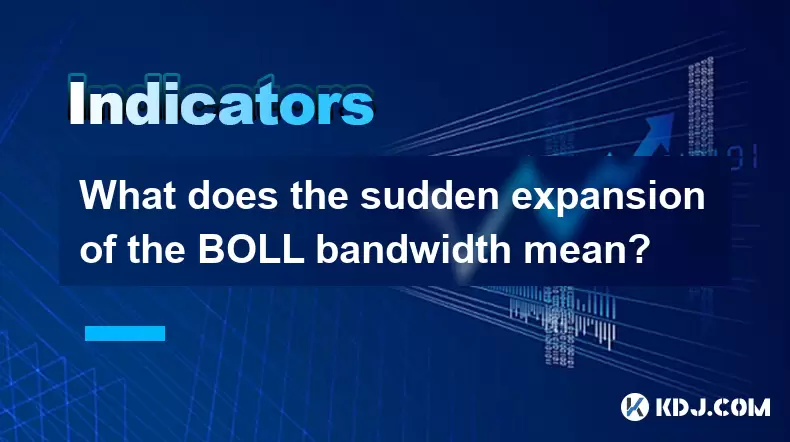
What does the sudden expansion of the BOLL bandwidth mean?
Jun 21,2025 at 01:49pm
Understanding the BOLL IndicatorThe BOLL (Bollinger Bands) indicator is a widely used technical analysis tool in cryptocurrency trading. It consists of three lines: a simple moving average (SMA) in the center, with upper and lower bands calculated based on standard deviations from that SMA. These bands dynamically adjust to price volatility. When trader...

Is the golden cross of the ROC indicator below the zero axis effective?
Jun 20,2025 at 09:42pm
Understanding the ROC Indicator and Its Role in Cryptocurrency TradingThe Rate of Change (ROC) indicator is a momentum oscillator widely used by traders to assess the speed at which cryptocurrency prices are changing. It measures the percentage difference between the current price and the price from a certain number of periods ago. The ROC helps identif...
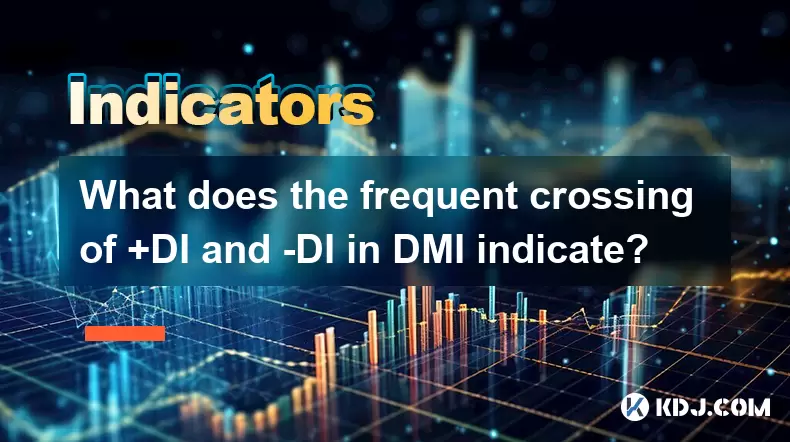
What does the frequent crossing of +DI and -DI in DMI indicate?
Jun 21,2025 at 05:14pm
Understanding the DMI and Its ComponentsThe Directional Movement Index (DMI) is a technical analysis tool used to identify the strength and direction of a trend. It consists of two lines: +DI (Positive Directional Indicator) and -DI (Negative Directional Indicator), along with the ADX (Average Directional Index) line which measures trend strength. In cr...

Does the sudden contraction of ATR indicate the end of the trend?
Jun 20,2025 at 11:14pm
Understanding ATR and Its Role in Technical AnalysisThe Average True Range (ATR) is a technical indicator used to measure market volatility. Developed by J. Welles Wilder, ATR calculates the average range of price movement over a specified period, typically 14 periods. It does not indicate direction—only volatility. Traders use ATR to gauge how much an ...

Is it invalid if the DMI crosses but the ADX does not expand?
Jun 21,2025 at 09:35am
Understanding the DMI and ADX RelationshipIn technical analysis, the Directional Movement Index (DMI) consists of two lines: +DI (Positive Directional Indicator) and -DI (Negative Directional Indicator). These indicators are used to determine the direction of a trend. When +DI crosses above -DI, it is often interpreted as a bullish signal, while the opp...

Is the trend continuation when the Williams indicator is oversold but there is no rebound?
Jun 20,2025 at 11:42pm
Understanding the Williams %R IndicatorThe Williams %R indicator, also known as the Williams Percent Range, is a momentum oscillator used in technical analysis to identify overbought and oversold levels in price movements. It typically ranges from 0 to -100, where values above -20 are considered overbought and values below -80 are considered oversold. T...

What does the sudden expansion of the BOLL bandwidth mean?
Jun 21,2025 at 01:49pm
Understanding the BOLL IndicatorThe BOLL (Bollinger Bands) indicator is a widely used technical analysis tool in cryptocurrency trading. It consists of three lines: a simple moving average (SMA) in the center, with upper and lower bands calculated based on standard deviations from that SMA. These bands dynamically adjust to price volatility. When trader...

Is the golden cross of the ROC indicator below the zero axis effective?
Jun 20,2025 at 09:42pm
Understanding the ROC Indicator and Its Role in Cryptocurrency TradingThe Rate of Change (ROC) indicator is a momentum oscillator widely used by traders to assess the speed at which cryptocurrency prices are changing. It measures the percentage difference between the current price and the price from a certain number of periods ago. The ROC helps identif...

What does the frequent crossing of +DI and -DI in DMI indicate?
Jun 21,2025 at 05:14pm
Understanding the DMI and Its ComponentsThe Directional Movement Index (DMI) is a technical analysis tool used to identify the strength and direction of a trend. It consists of two lines: +DI (Positive Directional Indicator) and -DI (Negative Directional Indicator), along with the ADX (Average Directional Index) line which measures trend strength. In cr...
See all articles























